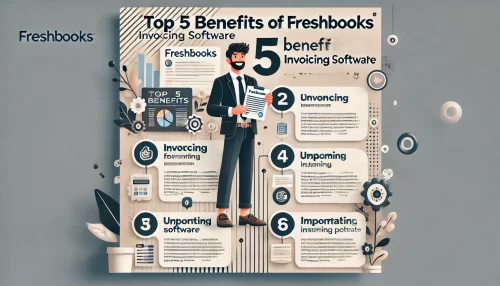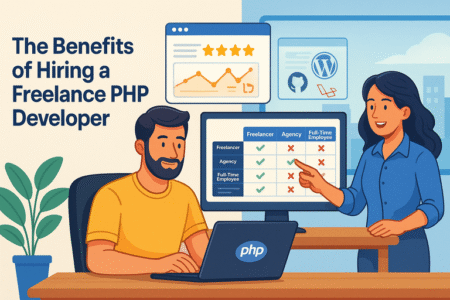Table of Contents
If you’ve ever tried hiring a Shopify freelancer, you’ve probably wondered—how much should you actually pay? The answer isn’t always simple, because rates can vary wildly depending on skills, experience, and even the type of Shopify work you need done.
From store setup to theme customization and SEO optimization, what’s fair can look very different depending on your goals and budget.
In this guide, we’ll unpack what goes into Shopify freelancer pricing, what typical rates look like, and how to decide whether you’re getting real value for your money.
Understanding How Shopify Freelancer Rates Are Set
Before hiring a Shopify freelancer, it’s worth understanding why rates can differ so dramatically—from $25 an hour to $150 or more.
These prices aren’t random; they reflect skill, project scope, and sometimes even where the freelancer lives.
Let’s unpack the key factors shaping these costs.
What Factors Influence Shopify Freelancer Pricing
Several factors come together to determine a Shopify freelancer’s rate, and understanding them helps you spot fair pricing quickly.
1. Skill Specialization: Shopify work covers everything from theme customization to liquid coding (Shopify’s own templating language). A freelancer who can handle front-end development, speed optimization, and app integration will charge more than one focused solely on product uploads.
2. Project Type and Complexity: Building a full Shopify store from scratch costs more than fixing a checkout bug. If you’re hiring someone for conversion rate optimization or complex theme rebuilds, expect higher pricing.
3. Demand and Market Conditions: Freelancers adjust their rates based on demand. During busy retail seasons (like Black Friday prep), Shopify specialists can charge premium prices for tight deadlines.
4. Tools and Software Expertise: A freelancer who knows how to configure Shopify Plus, integrate Klaviyo (for email marketing), or set up advanced analytics tracking is effectively saving you hours of work—and that value gets priced in.
Experience Levels And Their Impact On Rates
Experience is the clearest predictor of pricing in the Shopify freelance world.
Entry-Level Freelancers ($20–$40/hour): Often newer to Shopify, these freelancers typically handle small tasks—like editing product descriptions, adjusting colors in your theme, or setting up apps.
Mid-Level Freelancers ($40–$80/hour): These professionals have a few years of experience and can build or redesign a full Shopify store, manage apps, and handle performance optimization.
Expert Freelancers ($80–$150+/hour): They’re problem-solvers. You’re paying for insight, not just labor. For example, they might advise on UX flow, checkout design for conversion improvement, or API integrations.
I suggest using experience as your compass: If you’re launching your first store, a mid-level freelancer may be the sweet spot between affordability and quality.
Geographic Location And Its Role In Cost Differences
Where your freelancer lives matters—not just culturally, but economically.
North America and Western Europe: Expect $70–$150/hour. These freelancers often bring business acumen and strong communication skills.
Eastern Europe and Latin America: Around $40–$80/hour. High-quality work with lower overheads.
Asia and Africa: $20–$50/hour. Great for basic development, but time zones and communication may require extra planning.
Here’s the key: Location-based pricing doesn’t necessarily equal skill-based pricing. I’ve seen talented Shopify experts in India outperform North American freelancers at a fraction of the rate—it all depends on experience and fit.
How Project Scope Shapes Freelancer Fees
Project scope directly affects how freelancers price their work.
If you’re asking for “help with Shopify setup,” clarify what that means:
- Basic setup (theme install, basic settings): $150–$300 total.
- Custom store design: $1,000–$5,000.
- Advanced integrations or app builds: $2,000–$10,000+.
Freelancers use scope to estimate both time and risk. A small update might take one hour; a theme migration could require weeks. Always request a clear deliverables list—“Set up Shopify Payments > Add custom logo > Configure email notifications”—to prevent surprises in your invoice.
Average Shopify Freelancer Rates By Skill And Service
Shopify freelancers specialize in different parts of the ecosystem. Understanding average rates by role helps you budget realistically and avoid overpaying.
Typical Hourly Rates For Shopify Developers
Shopify developers handle backend and Liquid code tasks—everything that makes your store function smoothly.
Average hourly rate: $50–$120/hour.
Example: If you need to adjust your cart drawer or fix a broken filter, your freelancer will typically charge per hour. For complex theme builds, they might shift to project-based pricing ($2,000–$8,000).
Developers with skills in JavaScript or headless Shopify (using frameworks like Next.js) often charge at the higher end.
Pricing For Shopify Designers And Theme Experts
Designers shape how your store feels—the part customers actually see.
Average hourly rate: $40–$100/hour.
A theme expert might:
- Customize Shopify themes via the editor (Online Store > Themes > Customize).
- Create wireframes for homepage and product pages.
- Adjust mobile responsiveness.
If you’re using premium themes like Dawn or Impulse, a freelancer familiar with that theme can save hours by knowing where design limitations lie.
Content, SEO, And Marketing Freelancer Rates
Shopify content specialists improve discoverability and sales performance.
Average hourly rate: $30–$90/hour.
SEO experts may handle keyword research, Shopify blog optimization, or schema setup. Marketing freelancers often manage Klaviyo or Meta ad integrations.
Tip: Ask for specific examples—“Can you show me a Shopify store where you increased organic traffic?” A good freelancer will have measurable results, not vague claims.
Rates For Ongoing Maintenance And Support Services
Not every Shopify need is a big build—sometimes you just need ongoing updates.
Average retainer: $200–$800/month for light support (updates, app fixes, analytics tracking).
Some freelancers also offer “Shopify Care Plans,” which include uptime monitoring and bug fixes. If you rely heavily on online sales, paying for ongoing support prevents small issues from turning into lost revenue.
Comparing Hourly vs. Project-Based Shopify Freelancer Costs
Both models—hourly and project-based—have their place, but the right choice depends on your priorities.
Pros And Cons Of Hourly Billing Models
Pros:
- Flexible: You can pay as you go.
- Transparent: You see exactly where your money goes.
Cons:
- Costs can creep up fast if tasks expand.
- Harder to budget for large builds.
For quick fixes (like adjusting a footer or fixing checkout bugs), hourly makes sense. Just make sure your freelancer tracks time transparently—many use tools like Toggl or Clockify to log hours.
When Project-Based Pricing Makes More Sense
When you need a complete deliverable—like a Shopify store redesign—fixed pricing is best.
Why it works:
- You know total cost upfront.
- Freelancer is motivated to finish efficiently.
I advise asking for milestone payments tied to deliverables, like:
- Wireframe approval – 20%
- Development complete – 50%
- Final testing and handoff – 30%
That structure protects both sides and keeps timelines realistic.
Hidden Costs To Watch Out For In Each Model
Even “fixed-price” projects can hide extra costs:
- Theme purchases or app subscriptions.
- Stock imagery or custom font licenses.
- Rush fees for urgent changes.
I’ve seen clients underestimate these by hundreds of dollars. Always ask, “Are there any additional costs outside your fee?” It’s a simple question that saves you pain later.
How To Evaluate Whether A Shopify Freelancer’s Rate Is Fair
You don’t need to be an expert to tell if a rate is fair—you just need to compare intelligently.
Assessing Skill Level And Portfolio Quality
Look beyond hourly rate; instead, evaluate proof of work.
Go to Shopify Experts Marketplace, filter by “Store Setup” or “Custom Development,” and study portfolios. You’ll quickly see what $500 vs. $5,000 work looks like.
Check for:
- Mobile performance.
- Page speed (use Google PageSpeed Insights).
- Conversion-focused layouts (clear calls-to-action, optimized checkout flow).
A polished portfolio usually means efficiency—and efficiency is worth paying for.
Matching Rates To Project Complexity
A freelancer charging $100/hour might actually be cheaper if they complete a task in 2 hours that a $30/hour freelancer takes 10 hours to finish.
Match the freelancer’s rate to what you need done:
- Simple edits: Lower hourly okay.
- Custom features or apps: Pay for senior-level expertise.
This mindset saves both time and frustration.
Identifying Overpriced Versus Underpriced Offers
Rates that are too low can be just as risky as those too high.
If someone quotes $100 for a full Shopify store, expect corners cut—poor mobile optimization or messy Liquid code that’s hard to maintain.
Similarly, high rates don’t always guarantee value. Ask, “Can you break down what’s included?” Genuine professionals will explain exactly what their rate covers.
Using Industry Benchmarks To Validate Pricing
Industry data from Upwork and Shopify Experts Marketplace shows most Shopify freelancers charge between $40 and $100/hour depending on region and expertise.
If your quote is far outside that range, dig deeper. A freelancer might charge $150/hour for advanced API work—or only $25/hour because they’re new. Context is everything.
You can also benchmark using Upwork’s category filters (Shopify Development > Advanced Level). Comparing 5–10 profiles gives you a real-world baseline instantly.
Negotiating Better Rates Without Undervaluing Talent
Negotiating with a Shopify freelancer doesn’t mean driving prices down—it means finding an agreement that feels fair for both sides.
I like to think of it as setting the stage for a partnership, not a bargain hunt. When both parties feel respected, the quality of work always improves.
How To Communicate Your Budget Effectively
Transparency is the foundation of good negotiation. When you start by saying, “Here’s what I’m budgeting and here’s what I need,” you immediately build trust.
Here’s how to do it right:
- Be specific about your needs. Instead of saying, “I need a Shopify expert,” say, “I need help optimizing my checkout flow and setting up automated cart recovery emails.”
- Set a clear range. For example, “I’m budgeting between $1,000–$1,500 for this project, depending on scope.”
- Be open to feedback. A good freelancer might explain why your budget won’t fit your goals—and that’s valuable insight.
When communicating budgets inside Shopify-related projects, be upfront early—ideally before a proposal is written. This avoids surprises and signals that you’re serious about collaboration, not haggling.
Offering Long-Term Work To Secure Discounts
Freelancers love stability just as much as clients love predictability. If you’re planning multiple Shopify projects, mention that upfront.
For example: “I’ll need theme adjustments this month and ongoing optimization later—are you open to a retainer or discounted long-term rate?”
This approach can unlock 10–20% discounts or free priority support. Plus, a freelancer familiar with your store (knowing which theme you use, what apps you rely on, and how your checkout is customized) becomes exponentially more efficient over time.
I suggest setting a trial project first—something small, like a homepage revamp. If the freelancer delivers well, move into a monthly retainer for ongoing work. Everyone wins.
When And How To Ask For A Custom Quote
Project-based quotes make sense for clear, outcome-driven tasks like “Migrate from WooCommerce to Shopify” or “Design a custom product page layout.”
Here’s how to ask for one the right way:
- Share exact requirements: Include screenshots, Shopify theme name, and your current challenges.
- Ask for milestones: Request a quote broken into deliverables (e.g., design phase, development, QA testing).
- Clarify what’s included: For example, “Does this include post-launch bug fixes or revisions?”
In my experience, clear communication around deliverables prevents scope creep—where freelancers underquote, then charge more mid-project.
Red Flags When Negotiating With Shopify Freelancers
Not every low quote is a good deal. Here are warning signs to watch for:
- Vague pricing: “It depends” with no breakdown of hours or milestones.
- No contract or invoice: Always request a formal scope of work before paying.
- Unrealistically low offers: If someone quotes $200 for a full Shopify build, it’s often a copy-paste job with no optimization.
- Slow or evasive communication: If replies take days now, imagine what post-launch support will look like.
I advise using a small paid test task before committing to major work. Think of it as quality insurance.
Common Pricing Mistakes Clients Make With Shopify Freelancers
Hiring a Shopify freelancer can be transformative—but only if you approach pricing with strategy. Let’s tackle a few classic mistakes clients make (and how to avoid them).
Focusing Only On The Cheapest Option
Choosing a freelancer based on price alone almost always backfires. Cheaper often means more revisions, inconsistent quality, or poor understanding of Shopify’s ecosystem.
Example: I’ve seen $25/hour freelancers set up stores using bloated third-party themes that crash under traffic. The client later paid $2,000 to fix what could’ve been avoided.
Think of it like buying hosting—you wouldn’t pick the cheapest option if uptime mattered. Quality Shopify development is an investment, not a cost.
Ignoring The Importance Of Specialized Skills
Shopify development is a niche field. It’s not just about HTML or CSS—it’s also about understanding Liquid, Shopify’s unique templating language.
A freelancer who’s specialized in Shopify can:
- Customize your checkout process.
- Optimize page speed through code minimization.
- Set up metafields for structured product data.
Hiring a general web developer might save money upfront but lead to compatibility issues later. I recommend always asking: “How many Shopify stores have you built or maintained?”
Misunderstanding Revision And Maintenance Costs
Many clients assume revisions are unlimited—but most freelancers specify one or two rounds of edits. Beyond that, hourly rates apply.
Also, don’t forget maintenance costs: updating themes, ensuring app compatibility, and security patching.
If you update Shopify themes (from Dashboard > Online Store > Themes > Actions > Update), custom code may break—so having a retainer in place is smart.
Plan your budget to include 10–20% of your build cost annually for maintenance.
Overlooking The Value Of Clear Contracts
Never start without a contract, even for small Shopify tasks. It protects you and the freelancer.
A clear contract should include:
- Scope of work (specific tasks)
- Payment milestones
- Revision limits
- Deadlines
Without this, misunderstandings about “extra work” or “missing deliverables” can sour the project fast.
I suggest using platforms like Upwork or Shopify Experts Marketplace, which include built-in escrow and dispute resolution.
Tools And Platforms To Find Fair Shopify Freelancer Rates
Finding fair pricing starts with looking in the right places. The platform you choose affects both the quality of freelancers and the rate you’ll pay.
How Upwork, Fiverr, And Freelancer.com Differ In Pricing
Each marketplace attracts a different type of freelancer and pricing model:
| Platform | Average Hourly Rate | Best For | Notes |
| Upwork | $40–$100/hour | Experienced Shopify developers | Includes verified talent and secure escrow payments. |
| Fiverr | $20–$80/hour | Small, well-defined tasks | Good for logo tweaks or theme customization. |
| Freelancer.com | $25–$70/hour | Budget-conscious clients | Wide talent pool, but requires strong vetting. |
If you’re hiring for a full store build or advanced integrations, I personally recommend Upwork. You can filter by “Shopify Development,” set experience level, and check past reviews.
Specialized Shopify Talent Platforms And Their Cost Ranges
Beyond general freelancing sites, Shopify-specific networks give you access to vetted experts.
1. Shopify Experts Marketplace:Shopify’s official network where vetted professionals specialize in store setup, marketing, and app development. Rates range from $50–$150/hour depending on complexity.
2. Storetasker:Tailored to Shopify only. Matches you with a verified expert within hours. Most projects start around $200–$2,000.
3. Codeable (for Shopify + WordPress):Premium network focusing on complex development. Typically $80–$120/hour, but the quality control is exceptional.
These platforms screen freelancers, saving you hours of trial and error.
Using Shopify Experts Marketplace To Gauge Fair Rates
If you’re unsure what’s fair, use the Shopify Experts Marketplace like a pricing thermometer.
- Visit www.shopify.com/partners/directory, filter by your region and project type (e.g., Store Setup).
- Compare at least five listings to get a range.
- Note the average pricing and deliverables.
This gives you a data-backed sense of what your project should cost—without relying on guesswork or arbitrary quotes.
Expert Tips To Get The Best Value From Your Shopify Freelancer
Once you’ve found the right freelancer, your next goal is maximizing return on investment. Think of this as nurturing a long-term working rhythm rather than a one-off transaction.
Defining Clear Deliverables Before Starting
The most common reason projects go off track? Vague deliverables.
Before starting, write a list of everything you expect—screenshots, design notes, theme names, and feature requests.
For example: “From Dashboard > Online Store > Themes > Customize, please adjust homepage banner spacing and add dynamic product sections.”
It’s also smart to request a kickoff document from the freelancer summarizing:
- What’s included
- What’s excluded
- Timeline and communication channel
That single step often prevents 80% of misunderstandings.
Building Long-Term Relationships For Consistent Pricing
Once you find a reliable Shopify freelancer, nurture that relationship.
I’ve seen clients get consistent discounts or faster turnaround times simply because they treated freelancers like partners.
Simple gestures—prompt payments, constructive feedback, and referrals—go a long way.
Plus, long-term freelancers remember your setup, saving you hours on onboarding for each new task.
Tracking Results To Measure Value Over Time
Freelancers who understand business impact are worth their rate.
Set measurable goals—like “Improve conversion rate by 15% in 30 days.” Then use Shopify Analytics (Analytics > Reports > Online Store Conversion) to track results.
When you can clearly see how a freelancer’s work improves revenue, their rate stops being a cost and becomes an investment metric.
When To Reevaluate Rates As Your Store Grows
As your Shopify store scales, your needs evolve—and so should your freelancer agreements.
If your sales volume triples, your tasks might shift from design tweaks to automation workflows or custom app builds. At that point, expect rates to rise accordingly.
I suggest reviewing contracts every 6–12 months. If your freelancer has helped increase your revenue, paying them slightly more keeps them motivated and loyal—a small price for continued excellence.
Final Thought: Negotiating, hiring, and managing a Shopify freelancer is part art, part strategy. The best results come when you focus less on the hourly rate and more on the relationship value. When both you and your freelancer feel respected and fairly compensated, your Shopify store doesn’t just function—it thrives.






